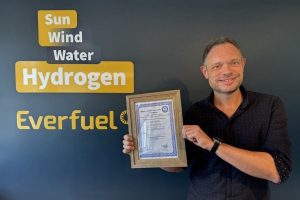By replacing CRMs and PFAS traditionally used in anion exchange membrane (AEM) water electrolysers, the project is advancing the first single-stack 100 kW AEM electrolyser prototype, aiming for a CAPEX of €400/kW and validation in an industrially relevant environment, reaching TRL 5.
Tests have shown that the newly developed materials can be scaled up without compromising performance. Large-scale applications are delivering results that align with those achieved in small-scale single-cell laboratory tests.
To reach this point, researchers refined catalysts, membranes, and porous transport layers in small-area cells. The Italian National Research Council (CNR) investigated the influence of the substrate used for the electrode as well as the type of porous transport layer, designed and manufactured by Bekaert. CENmat provided catalyst-coated substrates using high-performance CRM-free catalysts. CNR and DLR performed extensive tests to assess both performance and stability.
A direct comparison with a commercial polymer, Piperion™, demonstrated the performance advantage of CENmat’s PFAS-free AionFLX™ membrane and ionomer. Durability tests showed the stability of the HYScale components, meeting the objectives of the project.
The HYScale team also developed a large-area cell. CNR adjusted the architecture to improve cost-effectiveness and manufacturing efficiency. The design incorporates specialised solutions for frames, sealing, and transport layers to reduce the number of machining steps.
A flow-field-free design was adopted to simplify the architecture of the AEM short stack and reduce manufacturing complexity. According to Nicola Briguglio, senior researcher at CNR, eliminating the flow field reduces the overall thickness of the stack and facilitates a more compact and lightweight design.
Testing is now underway as part of the short-stack phase. HYScale is advancing towards integrating the stack into a fully functional electrolyser system.
The HYScale consortium includes nine partners from seven EU countries, combining research and industrial expertise to integrate the materials into a complete electrolyser system for real-world applications. The project is supported by the Clean Hydrogen Partnership and funded by the European Union.






